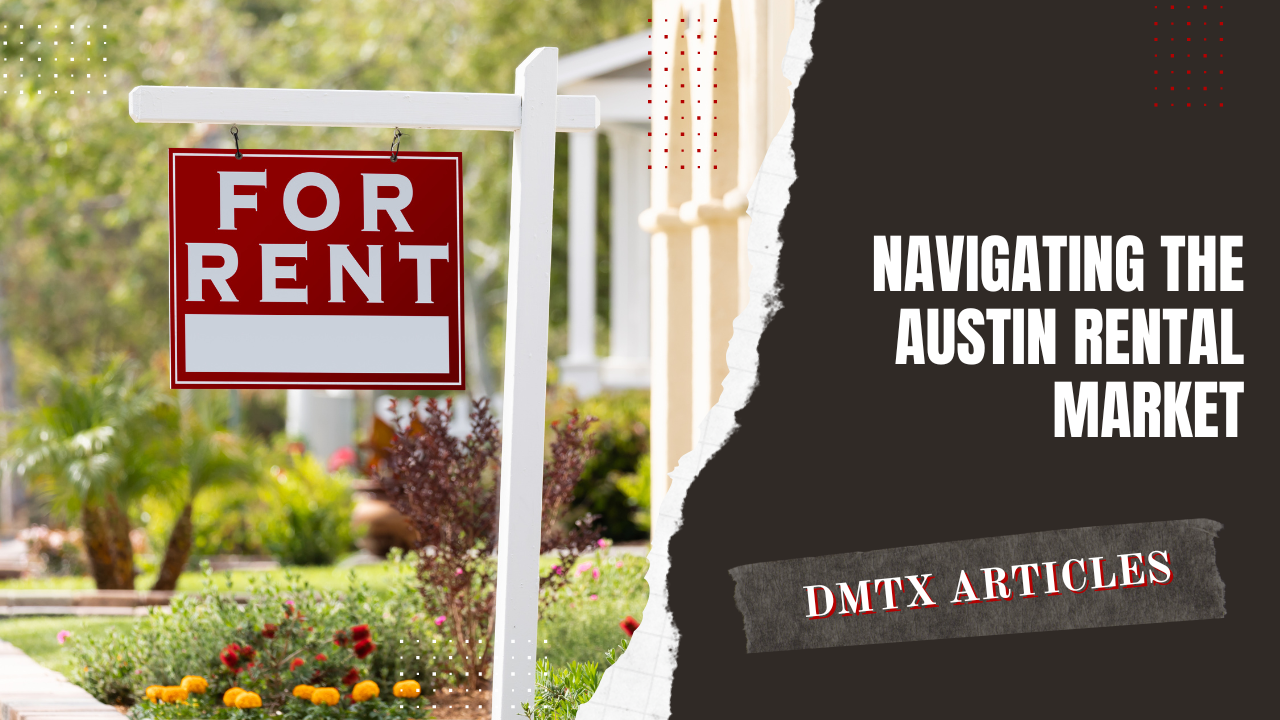Austin, Texas, is a vibrant city known for its live music scene, diverse culture, and thriving tech industry. As the city continues to grow, so does its rental market, making it essential for prospective renters to understand the landscape and navigate it effectively. Whether you’re moving to Austin for the first time or looking for a new place within the city, this guide will help you navigate the Austin rental market with confidence.
1. Understanding the Austin Rental Market
Market Overview
- High Demand: Austin’s popularity means high demand for rental properties, especially in desirable neighborhoods close to downtown and tech hubs.
- Rising Rents: Due to the demand, rental prices have been steadily increasing. It’s crucial to set a realistic budget and act quickly when you find a suitable place.
Key Neighborhoods
- Downtown: Ideal for those who want to be in the heart of the city, close to work, entertainment, and dining options.
- South Congress (SoCo): Known for its eclectic shops, restaurants, and lively atmosphere.
- East Austin: Offers a mix of historic charm and modern developments, popular with young professionals and creatives.
- North Loop: A quieter, more residential area with a mix of older homes and new apartments, ideal for families.
2. Setting Your Budget
Average Rent Prices
- One-Bedroom Apartments: Typically range from $1,200 to $2,000 per month, depending on location and amenities.
- Two-Bedroom Apartments: Usually between $1,500 and $2,800 per month.
- Houses and Townhomes: Rentals can vary widely but generally start around $2,000 per month for a modest home.
Additional Costs
- Utilities: Factor in costs for electricity, water, gas, and internet. Some rentals may include certain utilities in the rent.
- Security Deposits: Usually equivalent to one month’s rent but can vary.
- Pet Fees: If you have pets, expect to pay additional deposits and possibly monthly pet rent.
3. Finding the Right Rental
Online Resources
- Rental Websites: Use websites like Zillow, Apartments.com, and Rent.com to search for available properties.
- Social Media: Join local Facebook groups or follow Instagram accounts dedicated to Austin rentals.
- Craigslist: Still a valuable resource, but be cautious of scams.
Working with a Realtor
- Benefits: A local realtor can provide access to listings that may not be widely advertised and offer insights into the best neighborhoods based on your preferences.
- No Fee for Renters: In many cases, the landlord pays the realtor’s fee, so you can benefit from their expertise at no additional cost.
Apartment Locators
- Specialized Services: Austin has several apartment locator services that can help match you with rentals based on your criteria. These services are often free for renters.
4. Visiting and Inspecting Properties
Scheduling Visits
- Plan Ahead: Schedule visits as soon as possible since desirable properties can be rented out quickly.
- Multiple Options: Try to visit multiple properties to compare features, prices, and neighborhoods.
What to Look For
- Condition: Check for any signs of damage or wear and tear. Ensure that appliances and fixtures are in good working order.
- Safety: Assess the safety of the neighborhood and the security features of the property (locks, lighting, security systems).
- Amenities: Consider amenities such as parking, laundry facilities, gyms, and common areas.
5. Understanding Lease Agreements
Lease Terms
- Duration: Standard lease terms are typically 12 months, but some landlords may offer shorter or longer terms.
- Renewal Options: Understand the renewal process and any potential rent increases.
- Early Termination: Be aware of the penalties for breaking a lease early.
Key Clauses
- Maintenance Responsibilities: Clarify who is responsible for maintenance and repairs.
- Utilities and Services: Know which utilities and services are included in the rent and which are your responsibility.
- Pet Policies: Review any restrictions or additional fees related to pets.
6. Applying for a Rental
Application Process
- Application Fee: Be prepared to pay a non-refundable application fee, usually ranging from $25 to $75.
- Required Documents: Commonly required documents include proof of income, identification, and rental history.
Credit and Background Checks
- Credit Score: Most landlords will check your credit score. A higher score can increase your chances of approval.
- Background Check: Expect a background check to assess your rental and employment history.
7. Moving In
Final Preparations
- Walkthrough: Conduct a final walkthrough with the landlord or property manager to document the condition of the property before moving in.
- Utilities Setup: Arrange for utilities to be set up or transferred to your name before your move-in date.
- Renters Insurance: Consider purchasing renters insurance to protect your belongings and provide liability coverage.
8. Making the Most of Austin
Explore the City
- Local Attractions: Enjoy Austin’s many attractions, such as Barton Springs Pool, Lady Bird Lake, and the live music scene on Sixth Street.
- Food and Drink: Dive into Austin’s culinary scene, from food trucks to fine dining, and don’t miss out on the city’s famous barbecue and Tex-Mex.
Get Involved
- Community Events: Participate in local events and festivals like South by Southwest (SXSW) and the Austin City Limits (ACL) Music Festival.
- Outdoor Activities: Take advantage of Austin’s many parks, hiking trails, and outdoor activities.
Conclusion
Navigating the Austin rental market can be challenging, but with the right information and resources, you can find the perfect home that fits your needs and budget. By understanding the market, setting a realistic budget, and utilizing available resources, you’ll be well-equipped to secure a great rental in this dynamic and exciting city. Welcome to Austin!


